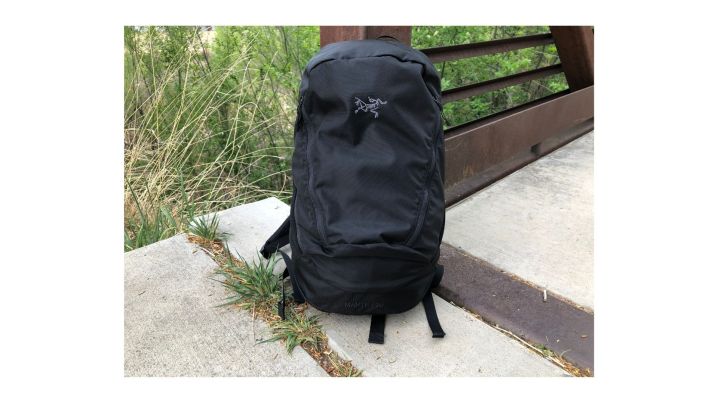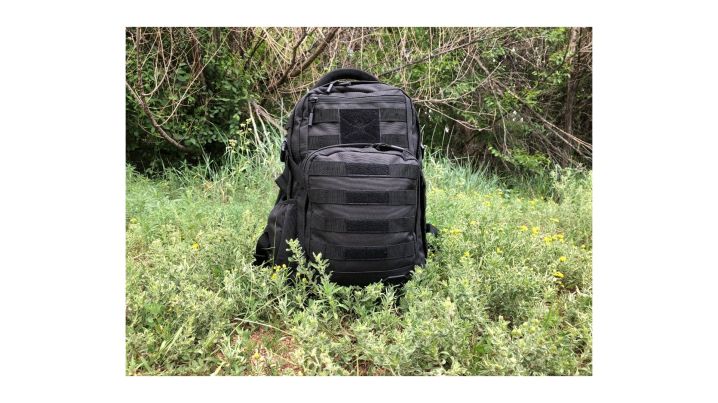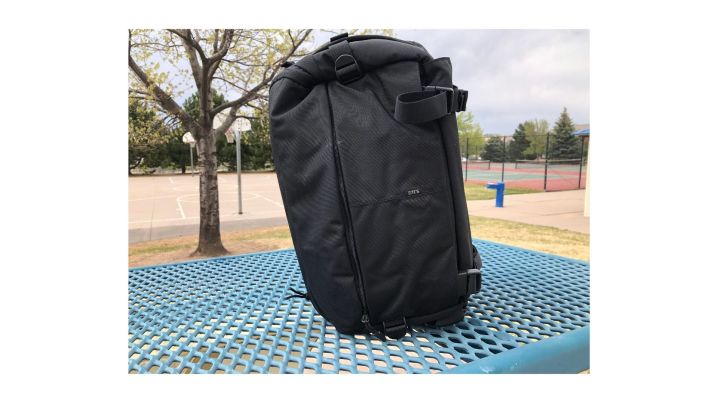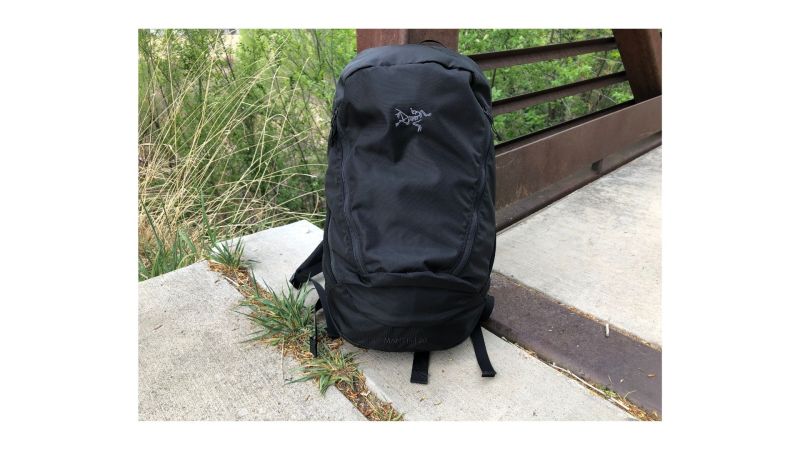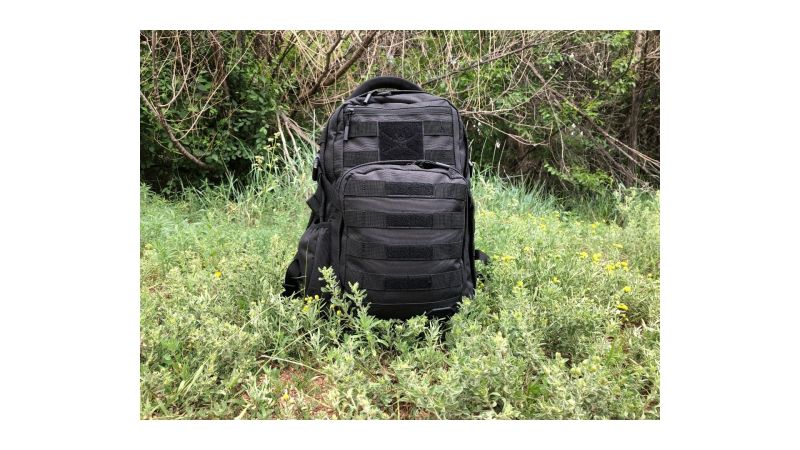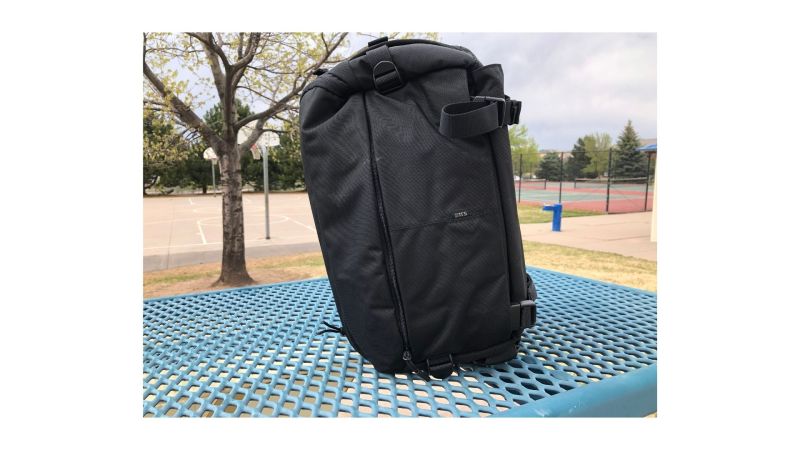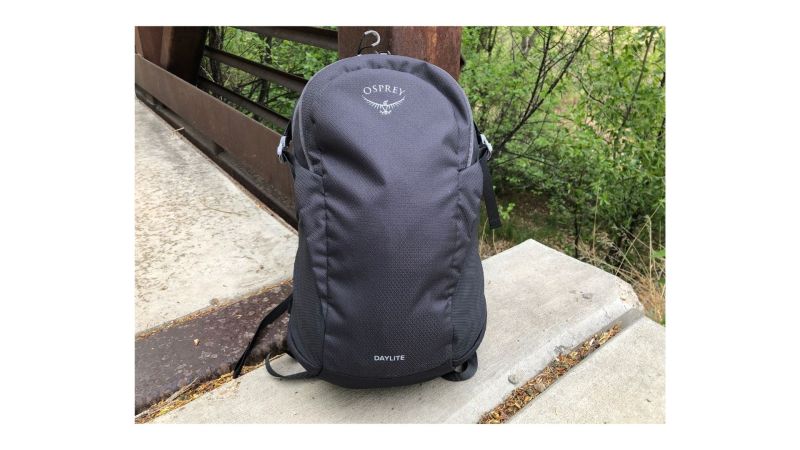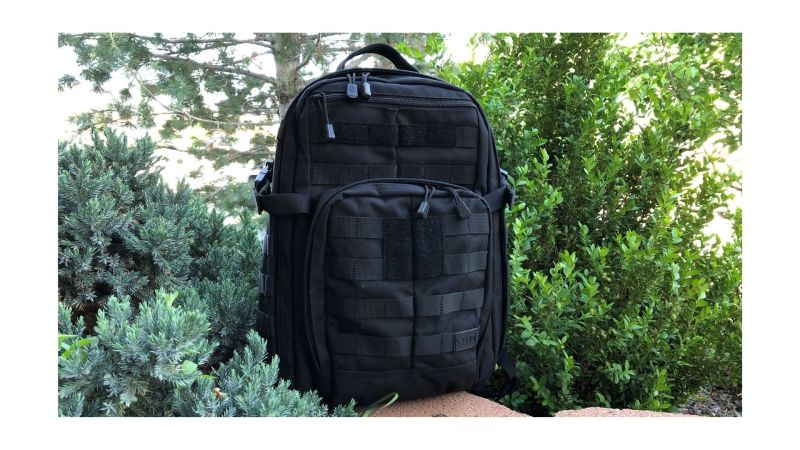We may earn revenue from the products available on this page and participate in affiliate programs.
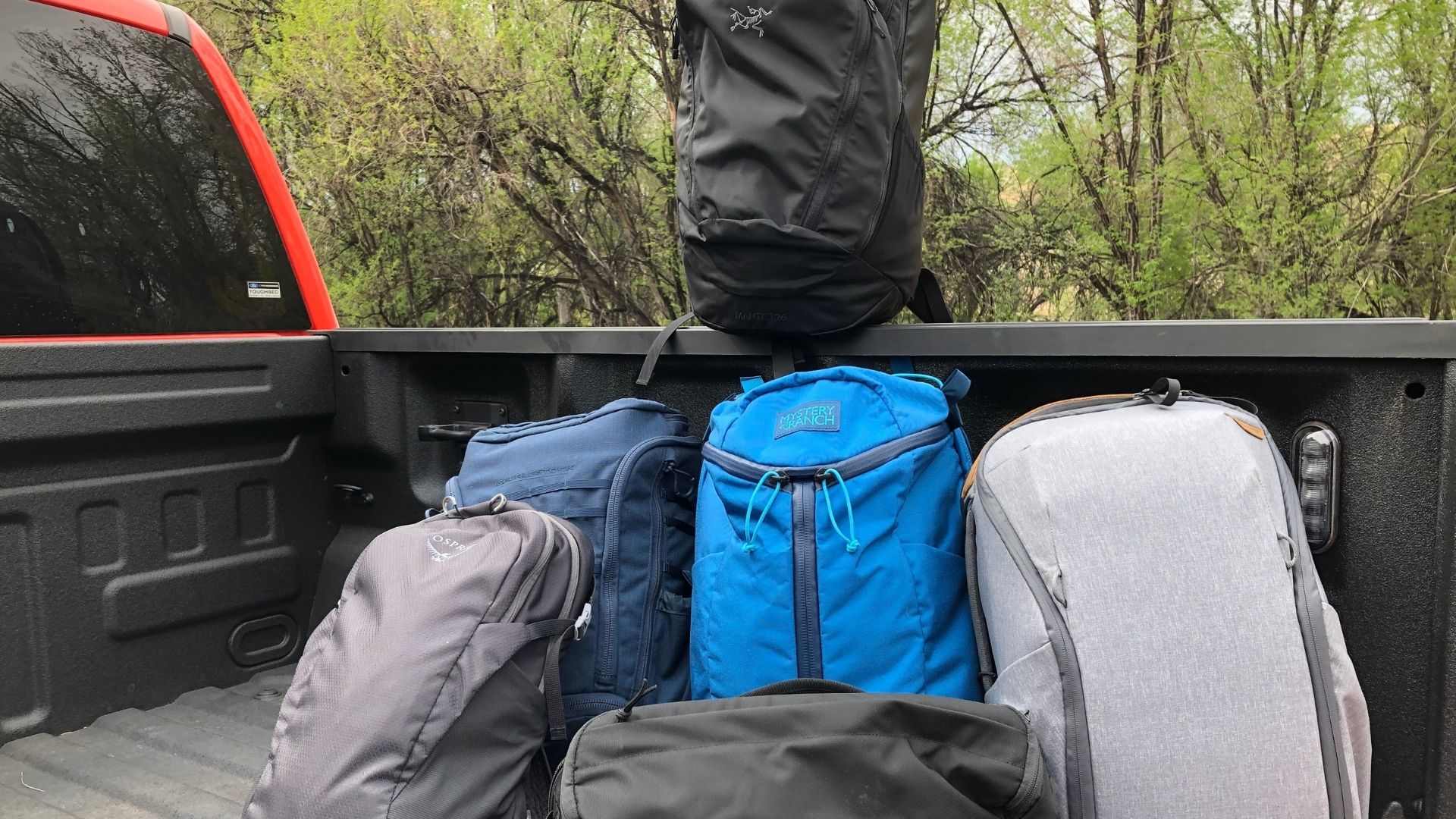
Sometimes, you just need an EDC backpack. Sure, you can fit your knife, keys, phone, and wallet into your pockets, but you’re a natural Boy Scout, always prepared with a full EDC loadout. (Ok, so maybe you’re a Coastie. Almost the same thing, right?) Water bottle? Check. First aid kit? Got it. Rain jacket? Probably a good idea. Pen and paper? Yep. iPad? Of course. The latest title from the Task & Purpose reading list? Duh. Unfortunately, none of that’s gonna fit in your pockets without turning you into a board-certified dork. (Boot much?)
No one needs a 55-liter rucksack to pack around their daily essentials, but sometimes, you do need a pack. You need something that can take a daily beating. You need something that’ll go everywhere without looking like a Jansport that lost a match with the washing machine. So, we’ve found (and tested) the best EDC backpacks on today’s market to get you what you need without all the fuss and bother of doing it yourself.
- Best Overall: Arc’teryx Mantix 26
- Best Value: Samurai Tactical Wakizashi
- Editor’s Choice: 5.11 Tactical LV10
- Best Lightweight: Osprey Daylite
- Best Tactical: 5.11 Tactical RUSH12 2.0
- Best for Concealed Carry: Eberlestock Little Trick
How we tested
Testing EDC backpacks is simple and complex all at once, so to evaluate these packs, I had to put in a good bit of effort to get a good sense for what each bag could handle. Each bag rode along with me for a solid week or more as I hit the road, went to the coffee shop, and generally lived life in, around, and out of town.
The loadout was the same each time: a full-size first aid kit, a Level IIIa ballistic panel, snacks, eyewear, an OBDII reader, writing utensils, and a handful of other odds and ends. Since it’s springtime in the Rockies, I also packed in a rain jacket, down jacket, hat, and other weather-appropriate gear, depending on the day. If the pack in question had a laptop sleeve, my laptop was sure to hitch a ride, and if it included a CCW pouch, I gave it a good going over with my eyes, hands, brain, and a handy (unloaded) subcompact.
Each time I packed a new bag, I paid close attention to each one’s design layout, organizational options, and ease of access. I checked to see how easy I could “rip” open the main compartment single-handedly, and I adjusted each pack to evaluate how much of a “custom” fit it could provide. I also conducted a stuff test which entailed packing heavy coats and jackets into the pack to the point of bulging and tossing the stuffed goose, er, bag around to see how well the seams and zippers could take the strain.
Best Overall
Arc'teryx Mantis 26
Best Value
Samurai Tactical Wakizashi
Editor’s Choice
5.11 Tactical LV10
Best Lightweight
Osprey Daylite
Best Tactical
5.11 Tactical RUSH12 2.0
Best for Concealed Carry
Eberlestock Little Trick
Our verdict on EDC backpacks
Today’s market is loaded with EDC backpacks, so narrowing it down to one pick can be quite a challenge. That said, the Arc’teryx Mantis 26 managed to beat the pack thanks to its combination of size, weight, versatility, durability, and user-friendly features. For the penny pinchers out there, we like the Samurai Tactical Wakizashi for its size, versatility, and price point.
What to consider when buying an EDC backpack
Everyday carry backpacks may be called upon to fill a wide variety of tasks, but in the grand scheme of things, they all serve a similar purpose: to tote your gear. Of course, EDC loadouts can vary dramatically from person to person, especially once big-ticket items enter the picture. That said, all EDC backpacks fall into a handful of overarching categories, and all good EDC bags will sport a handful of key features.
Types of EDC backpacks
Urban
Urban EDC backpacks are like the EDC equivalent to vanilla ice cream. These backpacks often have a traditional, Jansport-esque vibe and are found in classrooms, cubicles, and coffee shops around the world. Generally, they fall into one of two subcategories: school or professional.
Urban EDC packs almost always feature a padded electronics sleeve that can house your laptop or iPad. They often sport a “slick side” aesthetic with little more than a couple of water bottle pouches to mix things up. Urban-style packs often come in a variety of colors to keep things fun and interesting, although this can be a significant shortcoming for you “gray man” types.
Outdoor
Some spend more time in the great outdoors than others, and for nature-loving EDC practitioners, a proper backpack is in order. Outdoor EDC backpacks are designed to pull double duty in both the backcountry and the ‘burbs. As such, these EDC packs boast a tough construction and a handful of valuable features.
Outdoor backpacks are designed to take a beating and to help lug around tougher and heavier gear than what the typical EDC bag can handle. To accomplish this mission, these packs sport extra padding and ventilation to increase comfort. Outside, they sport external gear attachment points, glove-friendly zipper pulls, and sometimes a water bottle pouch or two. They also include internal hydration bladder pouches and hose ports, and often, these pouches double as padded laptop sleeves for maximum versatility.
Tactical
If your definition of “living on the edge” includes the potential for flying lead, then maybe a tactical EDC backpack may be the way to go. These EDC packs are built like a tank and can accommodate more gear than most people will ever own.
Like outdoor backpacks, these tactical EDC bags incorporate practical features into their designs, such as extra padding and ventilation, glove-friendly zipper pulls, and quick-release shoulder straps. They often have a hydration bladder pouch/laptop sleeve and a hydration hose port as well as storage space for firearms, such as a dedicated slot for your CCW, and accommodations for flex cuffs, ID patches, and other valuable accessories.
Tactical EDC packs usually fall into one of two subcategories: overt or covert. Overtly tactical packs usually have plenty of PALS webbing to handle all your MOLLE gear and come in “tactical” colors for when camouflage and concealment actually matter. On the other hand, covert tactical packs skip the webbing and take on an urban or outdoor aesthetic for situations in which a low profile is essential.
Key features of an EDC backpack
Design
An everyday carry backpack is only as good as its design and construction quality. After only a few outings, a cheap, uncomfortable pack will end up collecting dust in your closet right alongside those soccer participation trophies you got in elementary school.
A backpack’s design directly affects how usable the bag will be, especially in an everyday carry context. Look for a pack with a clamshell design or something similar that will allow you to fully open the backpack’s main compartment, exposing everything inside for easy access to all your gear.
Construction quality is a key design factor. A sub-$50 pack likely won’t last more than a couple of years, so if durability matters much to you, look for something that’s well-built. Thick materials, reinforcements, and a smart design choice will help ensure longevity. That said, the most durable packs tend to be heavy, so look for a good balance between toughness and weight.
Comfort
Comfort is a critical consideration in an EDC backpack and especially so if you spend loads of time on the move. A pack’s weight (also an important design consideration) directly impacts its degree of comfort, but be on the lookout for other features as well.
A comfortable EDC pack will be well-padded and well-ventilated to support heavy loads and all-day use. In particular, the shoulder straps and back panel will benefit most from these upgrades. A sternum strap can go a long way toward distributing weight a bit more evenly, and the relatively uncommon hip belt does this even better.
Cargo capacity and organization
An EDC backpack that fails to keep your gear accessible is nothing more than a glorified plastic Walmart bag. Cargo capacity and organization are key components of a good pack but pay attention to what specific features a given bag may include. In terms of cargo capacity, a typical EDC backpack will measure somewhere between 10 and 25 liters, although the sweet spot for most people is in the 15- to 20-liter range.
As for organizational features, make sure to snag a pack with most of the following (depending on your specific loadout, of course). Hydration solutions, such as hydration bladder sleeves or water bottle pouches, and electronics sleeves are commonly available features that many users will appreciate. If you prefer to pack heat off your person or simply what an additional storage location for your CCW boomstick, then look for a bag with a dedicated CCW sleeve. Also, look for interior pockets and pouches as well as external gear attachment points.
EDC backpack pricing
Budget
Quality EDC backpacks aren’t cheap, although on occasion, you can find a decent pack for less than $75. The best packs in this price range tend to run light on features, but that doesn’t necessarily make them any worse than a higher-priced option. Usually, affordable packs of sound quality will have small cargo capacities and limited or streamlined organizational features, such as a dual-purpose hydration bladder/tablet sleeve.
On the other hand, low-cost packs that boast oodles of features usually come up lacking in other areas. A $50 “tactical” backpack with a platoon’s worth of PALS webbing and 25 liters of interior space usually will come up short in the comfort, design, and durability departments.
Mid-range
For most people, the $75 to $150 range is the sweet spot for EDC backpacks. Most packs in this price range boast a solid combination of features commonly required by the average EDC practitioner
In this category, clamshell, and similar backpack designs make frequent appearances. Construction quality tends to be solid, with build materials and bag layout usually receiving good thought during the R&D phase. This often results in a comfortable, practical pack regardless with a decent price tag.
Mid-range EDC backpacks usually shine in the cargo capacity and organization departments as well. These packs usually run the gamut in size, and there are at least one or two offerings that are perfectly set up for virtually every conceivable use case.
Premium
Once you hit the $150 mark for an EDC backpack, you can expect a premium product. High-end packs boast high-quality materials, durable construction, and (usually) great layouts. These bags are built to endure years and years of abuse without compromise. Not only are these packs designed to be comfortable, but they also often feature some degree of sizing adjustment for an almost custom fit.
Most of these backpacks run on the large side in terms of cargo space, which means they tend to be best for individuals who pack along bushels of gear with them every day. In terms of organizational features and gear attachment points, it’s tough to beat these bad boys.
Tips and tricks
As with something you do for decades upon decades, you pick up a few tips and tricks along the way in terms of selecting the right product, and/or using it. That’s the case with us and EDC backpacks. To help you bridge the information gap, here’s a selection of what we’ve learned along the way.
- Before buying an EDC backpack, determine your EDC loadout to avoid buying too much pack. Ounces equal pounds, and pounds equal pain, particularly if you plan to wear your pack all day, every day.
- Once you’ve determined your typical EDC loadout, figure out how much additional cargo capacity you might need for “rainy day” gear. A properly spec’d bag will always have room for a little extra.
- Don’t pay for features you don’t need. For example, if you never use a laptop on your daily adventures, skip the electronics sleeve. Remember, ounces equal pounds.
FAQs about EDC backpacks
You’ve got questions, Task & Purpose has answers.
Q: How big should an EDC backpack be?
A: The general consensus is that an EDC backpack should have a cargo capacity somewhere between 15 and 25 liters. That said, the size of your ideal pack will depend on what you regularly carry and any additional gear you may need for a given occasion, such as a rain jacket on a cloudy day.
Q: What is a tactical EDC backpack?
A: A tactical EDC backpack is similar to a more traditional EDC bag but with extra features and tougher construction. In some cases, tactical EDC packs will sport PALS webbing that allows them to accept MOLLE pouches and accessories, and many tactical packs incorporate CCW pouches into their designs.
Q: What is a MOLLE backpack?
A: A MOLLE backpack is any backpack equipped with PALS webbing which is designed to accept MOLLE pouches and accessories. Often, “MOLLE” and “PALS” are used interchangeably in product descriptions, so don’t overthink it. MOLLE backpacks and accessories are 100 percent compatible with PALS gear and vice versa.
Q: What should I carry in my EDC backpack?
A: EDC loadouts can vary dramatically from person to person due to factors such as daily activities, personal skill sets, and local climate. Write down what items you absolutely must have with you on a daily basis (keys, wallet, etc.) plus any activity-specific gear (laptop, rain jacket, etc.). Anything that won’t reasonably fit into a pocket goes in your backpack.
